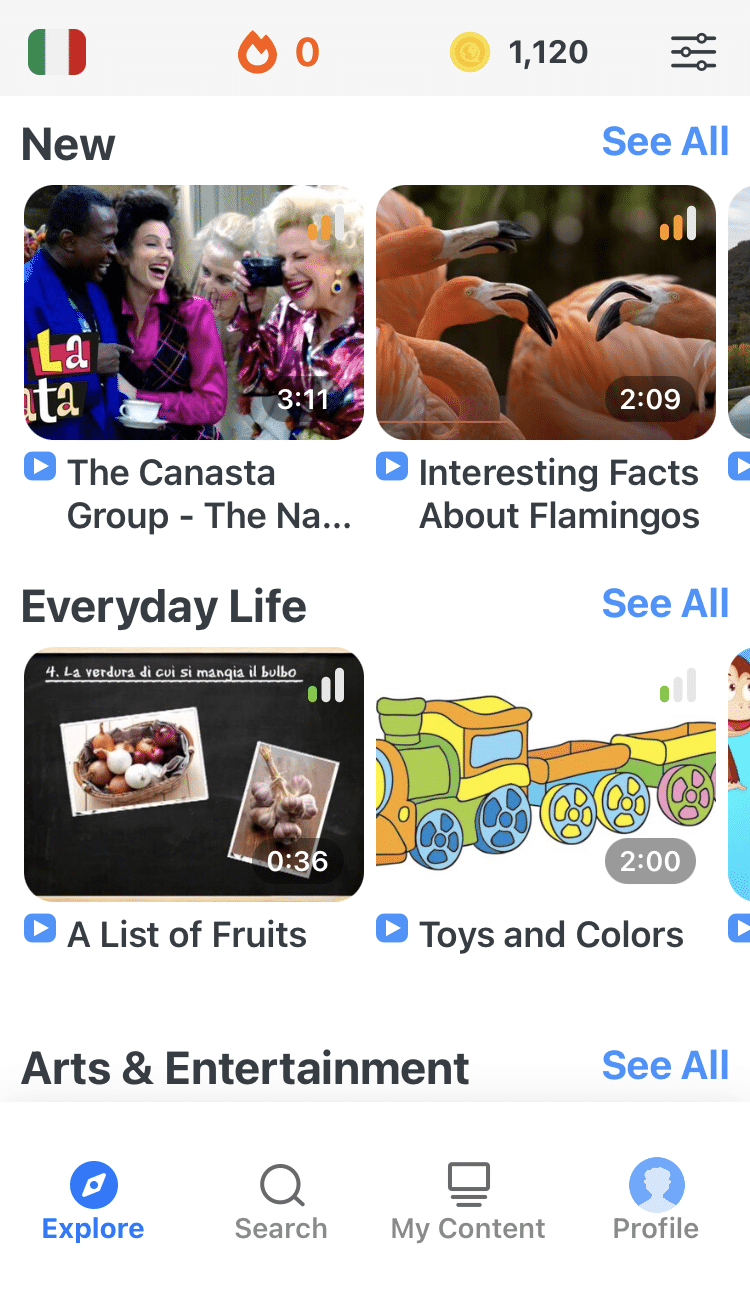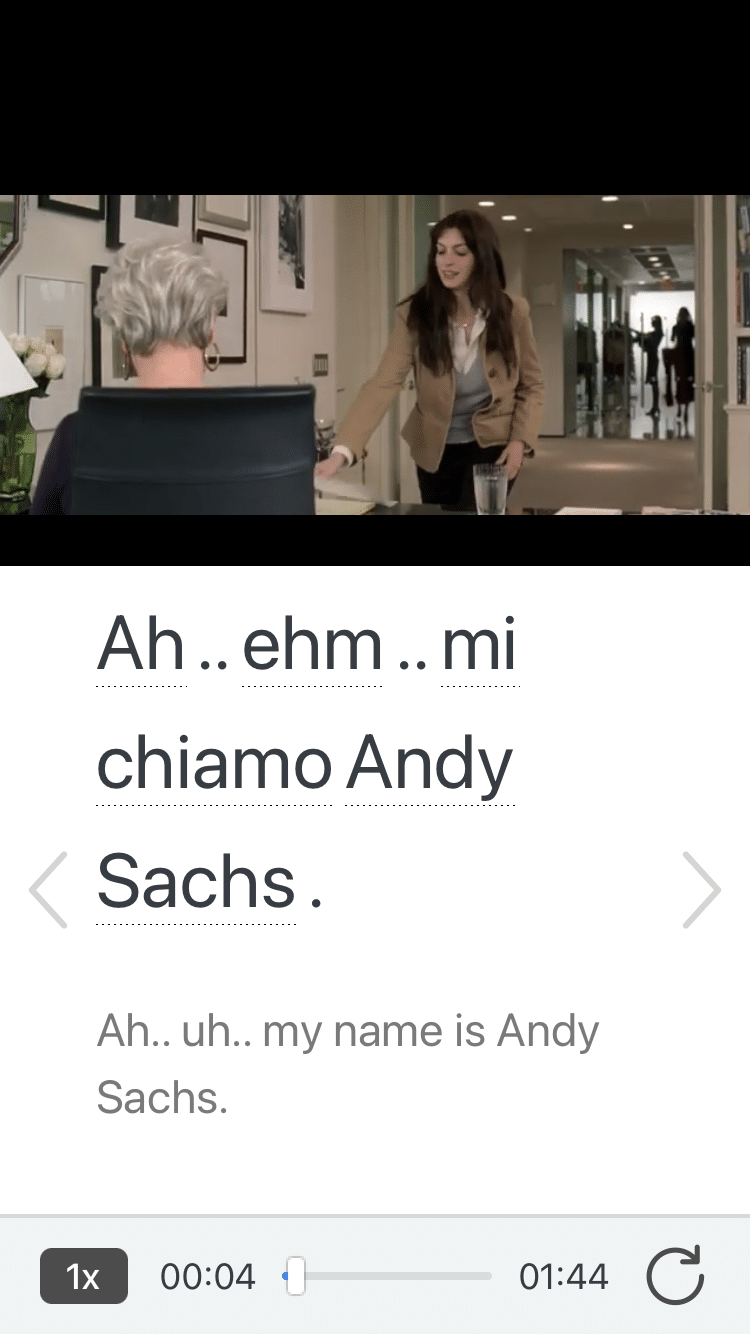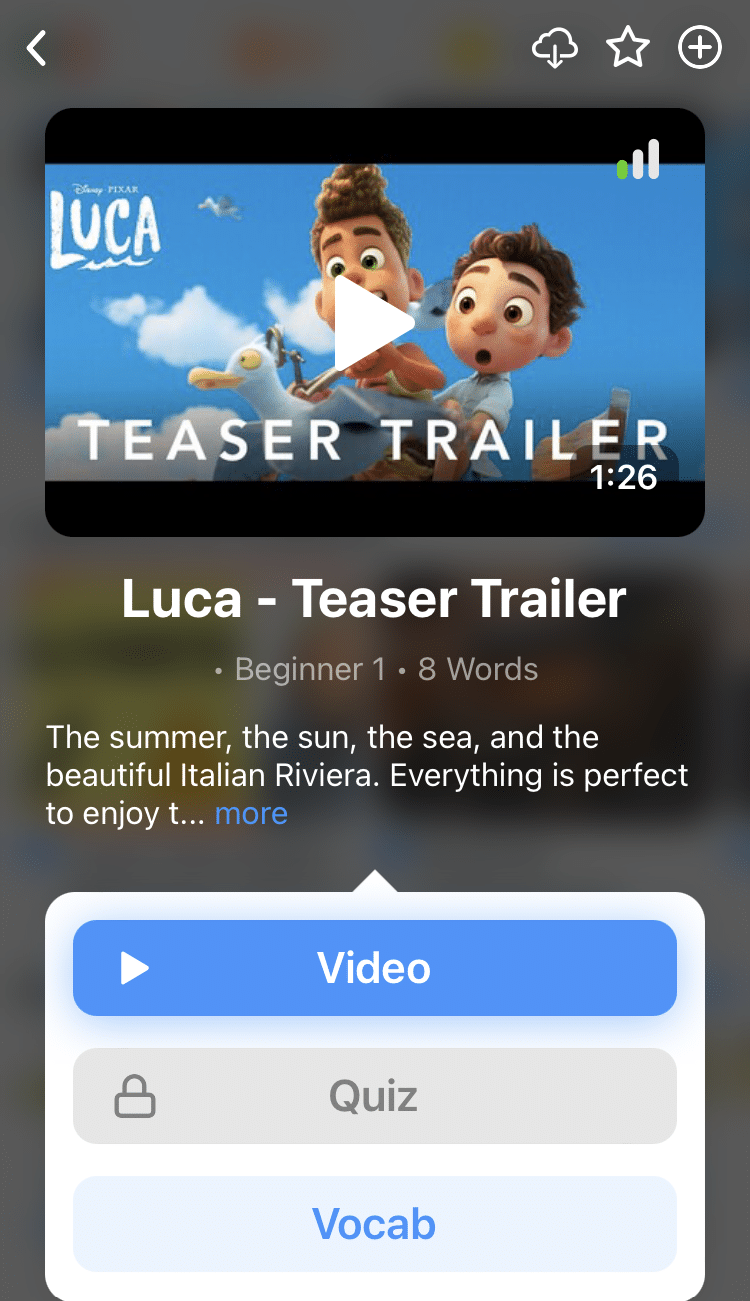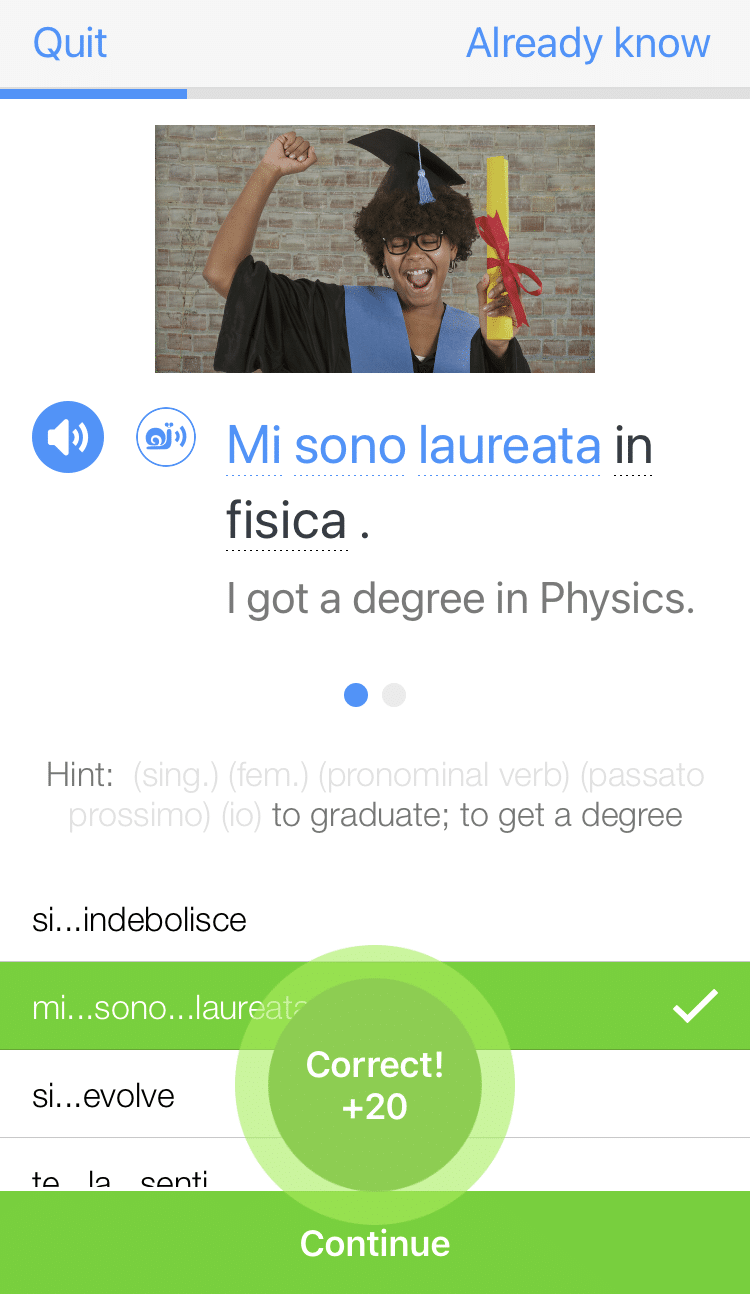
One Step at a Time: Teach Yourself Italian in 8 Steps
When you begin studying a new language like Italian, it’ll be tempting to learn everything at once: vocabulary, grammar, listening, speaking, reading and writing.
But fear not. Breathe in, breathe out. Learning Italian (or any language, for that matter) is a process, and small but consistent victories will eventually build your overall mastery of the language.
Here are eight steps to teach yourself Italian without getting bogged down by the details.
Contents
Download: This blog post is available as a convenient and portable PDF that you can take anywhere. Click here to get a copy. (Download)
Why Teach Yourself Italian?
So, maybe you’ve decided to self-study Italian. Congratulations on your decision! While it may not always be easy, it’ll be worth it. Teaching yourself a new language is a rewarding experience, but finding the right tools to learn are essential.
Lucky for you, self-studying Italian is easier than it may seem at first. For starters, English speakers have some advantages because Italian shares similarities with English
Though English is a Germanic language, many English words are Latin-based, and surprise, surprise, Italian itself is a daughter language of Latin. This gives us cognates such as concerto (concert), problema (problem), finale (final) and many others.
But cognates aren’t the only reason teaching yourself Italian is achievable. Thanks to the popularity of the Italian language and the many language learning tools available on the internet, there are hundreds if not thousands of great resources available for you to use.
Think of it this way: you essentially get to design your own Italian course.
Not only does that make your Italian-learning journey fairly inexpensive, but self-studying also allows you to control how much or how little Italian learning you do. In fact, self-studying is the perfect method for those who are busy, travel a lot or have unpredictable schedules.
8 Baby Steps to Teach Yourself Italian
Engines ready, Italian learner! Follow these eight steps to self-study your way to Italian fluency.
Step One: Find a Good Textbook
This first step sounds like a no-brainer: if you’re going to self-study Italian, you’re going to need some good study material.
The best way to find concise, easy-to-digest study material is to find a good Italian textbook. What’s more, you’re in luck! We’ve already covered the ins and outs of finding the perfect Italian textbook for self-studying!
Here are the fundamentals of choosing a good textbook. Your book should involve equal parts vocabulary building and grammar explanations. You should find a textbook with a wealth of comprehension and practice exercises, and it should prompt you to practice reading, writing, listening and speaking.
Check out these textbooks to get started:
- “Living Language Italian, Complete Edition” is the perfect textbook for beginners. It combines three course books, nine audio CDs and online support to give you a well-rounded Italian learning experience. With the course, you also get access to online flashcards, games and quizzes!
- “Italian Now! Level One” is less of a multimedia experience, but it’s a fantastic textbook for those who really want to learn Italian one step at a time. This course focuses on the conversational use of Italian, and its glossaries are great for looking up a word translation or verb conjugation.
- “Ultimate Italian Beginner-Intermediate” is a collection of 40 lessons that each include a dialogue about a particular topic. Aside from its great vocabulary building capabilities, this textbook includes a complete overview of Italian grammar as well as quizzes to test your understanding.
Step Two: Get a Dictionary
In addition to a good Italian textbook, a good dictionary is completely necessary to tackling Italian. In short, a dictionary will allow you to look up new words and phrases when you need a translation, especially when you’re using Italian outside of the textbook environment.
For starters, good dictionaries should include accurate translations. Further, some of the best dictionaries also include grammar glossaries and tips on pronunciation. Check out these recommendations:
- Berlitz offers the “Italian Pocket Dictionary,” which is just that: a dictionary you can fit in your pocket. Okay, maybe you can fit it in your backpack or purse. Either way, its small size doesn’t mean it’s not big on dependability.
In addition to its translations, this dictionary also has lists for common vocabulary such as numbers as well as verb conjugation charts.
- For those looking for a more advanced dictionary, Barron’s “Italian-English Dictionary” offers 100,000 entries! Each entry is listed with pronunciation so you’ll never have to wonder how to pronounce an Italian word again. In addition to the hard copy, you can also download the electronic dictionary for digital use.
For those who like online dictionaries or apps and need such dictionaries on the go, check out WordReference. WordReference is as good as, if not better than, many physical dictionaries. Its entries are in-depth and concise, and you can also engage with a wider Italian learning community for ongoing support.
You can also find Italian textbooks, dictionaries, phrasebooks and more in electronic format on VitalSource, where you can access books for a lower price using the convenient Bookshelf app.
Step Three: Load Up on Apps
Apps can be a great way to learn and practice Italian.
To summarize, here are some of the best ones:
- Duolingo is perhaps one of the best-known apps for learning foreign languages. Combining traditional flashcards with progressive technology, Duolingo offers themed lessons targeted to get you speaking, listening to, reading and writing Italian. It’s a fun way to practice Italian in short bursts every day.
- FluentU is great for language learning with authentic Italian content.
- Busuu aims to provide an Italian language course in app-format. However, there’s a little bit more of a focus on grammar and it feels more like a traditional course than Duolingo, for example. Further, you can link up with other Italian learners and speakers for Italian practice!
Step Four: Make a Schedule and Stick to It
Now that I’ve loaded you up on practical material to get you started on your Italian-language journey, let’s talk about what I consider more of a “soft” language learning skill.
Learning a new language isn’t just about using the right materials such as textbooks, dictionaries and apps: it’s also about making a long-term commitment to learning a new language.
But that’s not all. With your long-term commitment must come a long-term plan that you can stick to.
In short, making a schedule is one of the best ways to stay on track with Italian and reach your learning goals. This not only keeps you focused when you’re busy, but also allows you to watch and maintain your progress.
For starters, I suggest a weekly schedule where you set out how many textbook chapters, app modules and exercises you want to complete in one week. That way, you can make sure you’re getting a well-rounded, steady Italian learning experience.
Miss a week? Don’t sweat it! And don’t be afraid to adjust your schedule as time goes on to create the perfect Italian-learning regimen for you!
Step Five: Make Italian Digestible
This step for self-studying Italian ties in with the previous one: don’t run before you can crawl. In other words, don’t overwhelm yourself and begin a language learning regimen that’s impossible to maintain.
While you may be eager to cram as much Italian as you can as quickly as possible, doing eight textbook chapters a week may not be realistic. Even if you could complete eight chapters, retaining the information would be difficult. Ultimately, you’ll find it’s better to cover small chunks of Italian at a time.
In short, stick to baby steps and do things one step at a time, especially in the beginning. Maybe one textbook chapter a week and one app module or exercise is best until you get the hang of things.
Further, start off by aiming to learn 20 new words per week. While it’s important to learn grammar, words are the meat of any language, so don’t doubt how much power a simple 20-word weekly regimen can have. Use your Italian-learning app or make your own flashcards to help you practice.
I also suggest you make Italian even more digestible by writing your own notes on the textbook lessons. This helps you understand grammar concepts in your own words and will aid your language learning tremendously. Don’t forget to review these notes often!
Step Six: Encounter Italian in the Wild
Let’s paint the scene: you have a great textbook, awesome dictionaries, some apps and your schedule is equal parts challenging and manageable. Now let’s get you some actual authentic Italian. I’m talking Italian in the wild!
It’s never too early to start listening to and conversing with native Italian speakers. In fact, this is essential to becoming fluent in Italian. For starters, you can find your nearest Italian restaurant or bakery (that shouldn’t be hard!) and converse with the staff in Italian. Don’t be nervous! They’ll be happy to speak with you, especially if they know you want the practice.
If there are no Italians nearby (poor you, you Italian-cuisine-deprived soul), try meeting Italians online. To start, italki is a great place to find free Italian language partners and private language tutors at affordable rates. In addition to meeting other learners and native speakers to practice your Italian-language skills on, you can also find tutors and teachers to give you lessons.
If you feel you need some more guidance in your self-studying, checking out some sites specifically devoted to matching you with tutors may be helpful: With WyzAnt, you can do a detailed search to find the perfect tutor to teach you Italian in your area, and Verbling gives you everything you need to choose and meet up with Italian tutors online.
Step Seven: Become a Media Hound
In addition to conversing with native speakers, a great way to become acquainted with spoken Italian is to scour the web for Italian media! This will get you practicing your listening comprehension skills and will teach you a huge number of useful vocabulary words.
There are many ways to become an Italian media hound:
- First, I suggest checking out an Italian podcast. There are podcasts available for all levels of Italian (yes, beginner Italian podcasts exist, and they’re awesome). Podcast themes range from news to cooking to general interest, and the best part is that you can download these podcasts and their transcripts for on-the-go use.
- Watch Italian videos on YouTube. Like podcasts, you can find videos on virtually any topic that interests you. Aim for the videos with translations and subtitles to supercharge your watching experience!
- Check out Italian video libraries and series. You can see videos on a range of topics, view transcripts and translations and even do comprehension exercises on some videos to reinforce the content.
- For the extra media-obsessed, you can even watch the news in Italian. While Italian news stations like Rai allow you to stream Italian news reports any time of the day, I suggest beginners try News in Slow Italian.
Step Eight: Don’t Be Afraid to Make Mistakes
And we’re here! Our eighth baby step for learning Italian. And let me tell you, this is perhaps the most crucial one: don’t be afraid to take risks and make mistakes.
Learning a new language is challenging even with the best materials and schedule. Try your best, but also be open to the idea that you’re going to make mistakes—especially in those nerve-racking conversations with native speakers. However, don’t let fear or anxiety stop you. Most of the time, native Italian speakers will be ecstatic that you’re trying and will help you along the way!
And on that note, I have another cliché for you.
In addition to taking things one step at a time, remember: slow and steady wins the race. So, start racing, Italian learner!
Download: This blog post is available as a convenient and portable PDF that you can take anywhere. Click here to get a copy. (Download)
And One More Thing...
If you're as busy as most of us, you don't always have time for lengthy language lessons. The solution? FluentU!
Learn Italian with funny commericals, documentary excerpts and web series, as you can see here:

FluentU helps you get comfortable with everyday Italian by combining all the benefits of complete immersion and native-level conversations with interactive subtitles. Tap on any word to instantly see an image, in-context definition, example sentences and other videos in which the word is used.

Access a complete interactive transcript of every video under the Dialogue tab, and review words and phrases with convenient audio clips under Vocab.

Once you've watched a video, you can use FluentU's quizzes to actively practice all the vocabulary in that video. Swipe left or right to see more examples of the word you’re on.

FluentU will even keep track of all the Italian words you’re learning, and give you extra practice with difficult words. Plus, it'll tell you exactly when it's time for review. Now that's a 100% personalized experience!
The best part? You can try FluentU for free with a trial.
Start using the FluentU website on your computer or tablet or, better yet, download the FluentU app from the iTunes or Google Play store. Click here to take advantage of our current sale! (Expires at the end of this month.)


